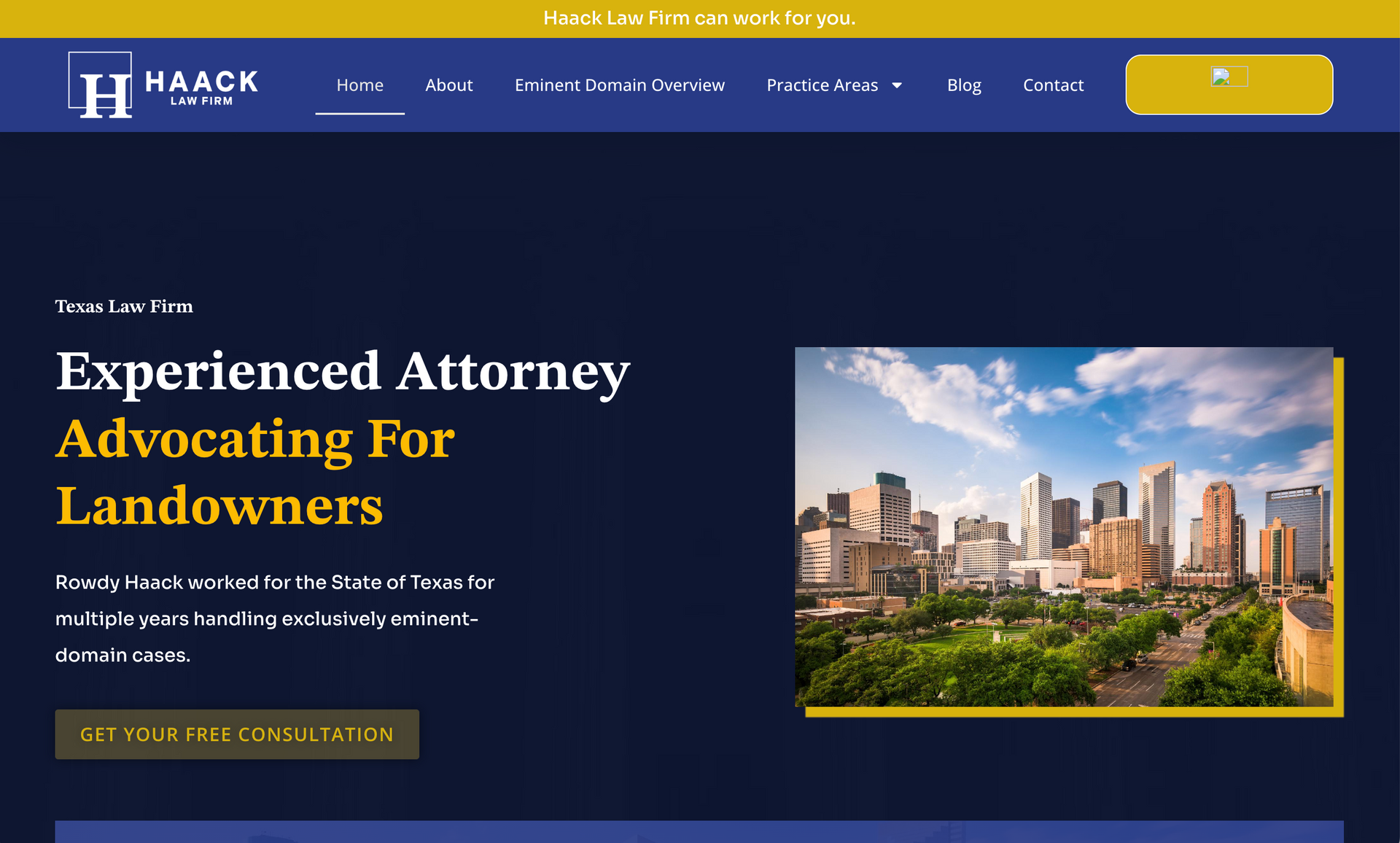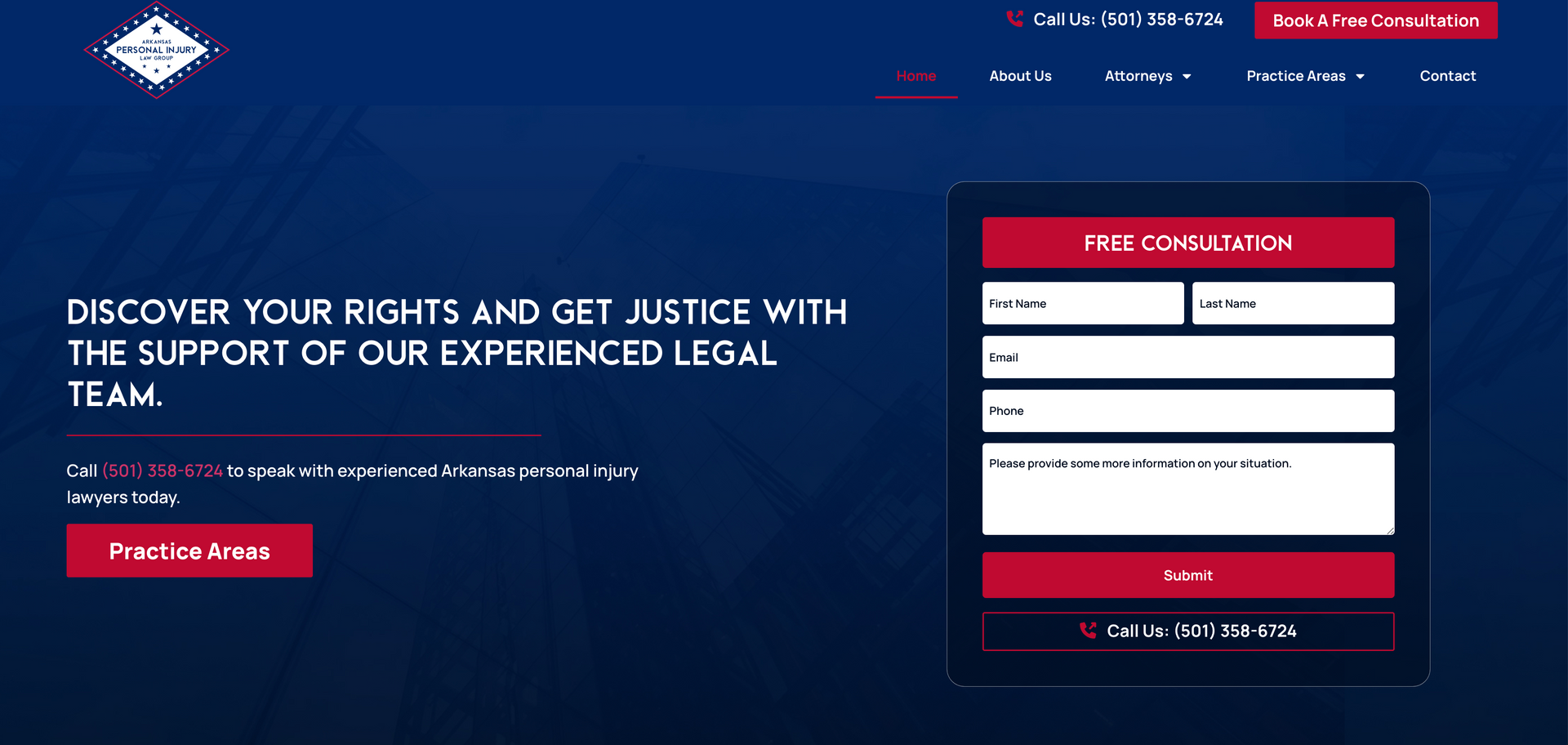22 Detailed Marketing Strategies for Personal Injury Attorneys
22 Personal Injury Lawyer Marketing Ideas to Grow Your Firm
22 Comprehensive Personal Injury Law Firm Marketing Strategies
What are some basic marketing terms that personal injury lawyers should know?
Personal injury lawyers should familiarize themselves with several basic marketing terms to effectively promote their services. Here are a few key terms to know:
1. Target audience: This refers to the specific group of individuals who are most likely to become clients of your personal injury law firm. Identifying your target audience allows you to tailor your marketing efforts to reach them more efficiently.
2. Branding: Branding is the process of creating a distinct identity for your law firm in the minds of potential clients. It includes developing a logo, slogan, and visual elements that convey your firm's unique attributes and values.
3. Market research: This involves collecting and analyzing data about your target audience, competitors, and industry trends. Market research helps you gain insights into the preferences and needs of potential clients, allowing you to refine your marketing strategies.
4. Marketing plan: A marketing plan outlines the specific actions you will take to promote your law firm and achieve your business objectives. It includes setting goals, identifying target markets, choosing marketing channels, and creating a timeline for implementation.
5. Advertising: Advertising involves paid promotions of your personal injury law firm, such as running ads on television, radio, print publications, or digital platforms. It is a way to raise awareness of your services and attract potential clients.
6. Search engine optimization (SEO): SEO is the process of optimizing your law firm's website to improve its visibility in search engine results. By incorporating relevant keywords, creating quality content, and optimizing your website's structure, you can increase organic traffic and attract more potential clients.
7. Conversion rate: Conversion rate refers to the percentage of website visitors or leads who take a desired action, such as filling out a contact form or scheduling a consultation. Tracking and analyzing your conversion rate helps you assess the effectiveness of your marketing efforts and make necessary adjustments.
8. Call to action (CTA): A call to action is a clear instruction given to potential clients, encouraging them to take a specific action. This could include phrases like "Contact us for a free consultation" or "Schedule an appointment today." CTAs are crucial for guiding potential clients towards the next step in the client acquisition process.
By familiarizing themselves with these basic marketing terms, personal injury lawyers can develop a comprehensive marketing strategy to reach their target audience effectively and differentiate themselves from competitors in the legal industry.
1- Mastering Marketing Principles
Begin with a robust educational foundation in marketing principles. This includes understanding the psychology of your potential clients, the lifecycle of your marketing campaigns, and the digital landscape of the legal industry. Study your competitors, identify what they do well, and consider how you can differentiate your firm. Knowledge of inbound and outbound marketing tactics, client retention strategies, and referral cultivation should also be part of your skill set.
2- Strategic Goal Setting
Your marketing strategy should be directly tied to specific, quantifiable goals. For instance, if your goal is to increase client intake by 20%, your marketing initiatives should be scalable and directly measurable against this objective. This might involve increasing your online presence through targeted content, enhancing your referral program, or expanding into new market segments. Goals should reflect the firm's mission and vision, ensuring that every marketing effort is an extension of your firm's values and brand promise.
3- Budget Allocation and Efficacy Analysis
It's vital to allocate your marketing budget based on data-driven strategies. Evaluate previous campaigns for ROI and allocate funds accordingly, emphasizing the most profitable channels. Consider using a mix of traditional and digital marketing tactics and regularly review campaign analytics to understand which channels provide the best cost-per-acquisition and client lifetime value. Adjust your spending dynamically to respond to the performance of different marketing channels.
4- Amplifying Client Testimonials
Develop a comprehensive system for gathering and promoting client testimonials. This can include automated follow-up emails after case resolution, direct requests during closure meetings, and incentives for clients who provide testimonials. Feature these testimonials prominently on your website, in your office, and in your marketing materials. Monitor review sites actively and engage with reviewers to show that your firm values client feedback.
5- Precision in Client Locales
Conduct market research to pinpoint where potential clients are most likely to look for legal advice following an injury. This could include specific online forums, local community centers, or hospitals. Consider partnerships with medical professionals for referrals. Optimize your online content to answer the questions that injured parties are asking, and use geo-targeted advertising to reach clients in the most relevant locations.
6- Strategic Social Media Presence
Develop a strategic plan for each social media platform, tailoring your message to the audience and strengths of each. This could involve sharing legal advice on LinkedIn, community engagement posts on Facebook, and visual storytelling on Instagram. Consider leveraging social media advertising to target potential clients based on demographics, interests, and behaviors that align with those seeking personal injury representation.
7- Website as a Conversion Tool
Transform your website into a powerful tool for client conversion. Beyond SEO and user experience, consider features like AI-driven chatbots for instant engagement, interactive case evaluation tools, and downloadable resources in exchange for contact information. Ensure that each page has a clear call to action and that the site architecture guides visitors towards making an inquiry.
8- Enhanced Accessibility for Client Contact
Make contacting your firm as effortless as possible. This means optimizing your website for mobile contacts, reducing the number of clicks to reach a contact form, and offering immediate scheduling options for consultations. Consider multilingual support to cater to a diverse client base and ensure that your contact methods are ADA compliant.
9- Advanced SEO Tactics
Stay ahead of the curve with advanced SEO tactics like long-tail keyword strategies, local SEO optimizations, schema markup for richer search results, and content that aligns with Google's E-A-T (Expertise, Authoritativeness, Trustworthiness) guidelines. Create a content calendar that includes regular blog posts, FAQs, and evergreen content that addresses the core concerns of your target demographic.
10- Comprehensive Google Business Profile Management
Actively manage your Google Business Profile to ensure that it accurately reflects your firm’s capabilities and successes. This includes posting updates, promoting events, and sharing articles or legal tips. Use this platform to engage with your clients by responding to reviews and questions promptly, which can improve your local SEO and client trust.
11- Broadening Free Online Marketing Outreach
Seek out and utilize every available free online marketing channel that can enhance your firm's visibility. This includes optimizing your profiles on platforms like Avvo, Justia, and FindLaw, participating in legal Q&A forums, and contributing guest posts to reputable legal blogs.
12- Targeted SEM Campaigns
Design Search Engine Marketing campaigns that are highly targeted to your prospective clients’ needs. Utilize keyword research tools to identify the terms they're using and create ad copy that addresses their pain points directly. Use landing pages specifically designed for these campaigns that track conversions and A/B test different elements to continually improve performance.
13- Maximizing Local Services Ads
Make the most out of Local Services Ads by ensuring your firm's profile is complete with certifications, services offered, and areas served. Take advantage of the review feature, and encourage satisfied clients to leave feedback directly through the platform. Monitor and adjust your bidding strategy regularly to stay competitive within your local market.
14- Comprehensive Video Marketing
Develop a comprehensive video marketing strategy that encompasses client education, firm branding, and client testimonials. Consider creating a YouTube channel dedicated to personal injury law, featuring Q&A sessions, explanations of legal processes, and stories of client success. Use these videos on your website and across social media to enhance engagement and provide value to potential clients.
15- Personal Brand Promotion
Actively promote your personal brand as a personal injury lawyer at every opportunity. This includes speaking engagements, publishing articles, and being active in community affairs. Ensure that your personal brand is synonymous with expertise and reliability in personal injury law.
16- Expanding Networking Opportunities
Build a robust networking strategy that includes attending industry conferences, local chamber of commerce meetings, and other events where you can meet potential referral sources. Cultivate relationships with healthcare professionals, insurance agents, and other lawyers who may refer clients to you.
17- Leveraging Public Speaking
Seek out public speaking engagements where you can share your expertise and connect with potential clients. Offer to speak at local community events, conduct free webinars on personal injury topics, and participate in panel discussions at legal seminars.
18- Diversifying with Traditional Marketing
Expand your marketing mix to include traditional methods like community newspapers, local radio talk shows, and strategic placements of billboards in high-traffic areas. These mediums can complement your digital efforts and help you reach demographics that are less active online.
19- Creating Authoritative Content
Create a content marketing strategy that positions you as an authority in personal injury law. Write in-depth articles that provide insights into legal processes, comment on recent changes in personal injury law, and offer commentary on high-profile cases.
20- Continuous Learning and Inspiration from Conferences
Regularly attend legal marketing conferences to gain new insights and stay updated on industry trends. Implement best practices from these conferences, network with marketing professionals, and bring back innovative ideas to your firm.
21- Engagement through Event Sponsorship
Engage with your local community by sponsoring events such as charity runs, local sports teams, or educational workshops. This not only increases your visibility but also builds goodwill and establishes your firm as an integral part of the community.
22- Client Relationship Management Post-Discovery
Develop a comprehensive client relationship management system that nurtures clients from the initial contact through the lifecycle of their case and beyond. Implement follow-up sequences, provide regular updates through newsletters, and create a referral program that incentivizes past clients to recommend your services.
Bonus Tips for your law firm marketing:
What are Local Services Ads (LSAs) and how can personal injury lawyers benefit from them?
Local Services Ads (LSAs) are a highly effective marketing tool that can benefit personal injury lawyers in numerous ways. These ads are specifically designed to target local customers, ensuring that your services are prominently displayed to potential clients in your area. One of the major advantages of LSAs is that you only pay for the service if a customer reaches out to you directly through the ad, making it a cost-effective advertising solution.
When it comes to personal injury lawyer marketing, LSAs offer several key benefits. Firstly, they allow you to effectively reach your target audience by presenting your ads to local customers who are actively seeking legal assistance. This ensures that your services are prominently visible to individuals who are specifically looking for personal injury lawyers in their area.
Additionally, LSAs provide an all-in-one platform for managing your advertising campaigns. With Google's Local Services Ads for Clio, you can easily sign up for an account, set up and run ad campaigns, capture new leads, and measure the performance of your campaigns. This streamlined approach allows you to efficiently oversee your marketing efforts and make any necessary adjustments to optimize your results.
By utilizing LSAs, personal injury lawyers can maximize their online visibility, generate a steady stream of leads, and ultimately enhance their chances of acquiring new clients. Whether you're looking to attract more local customers or improve your advertising efficiency, LSAs offer a valuable solution tailored to the needs of personal injury lawyers.
How can personal injury lawyers incorporate video marketing into their strategies?
Personal injury lawyers can effectively incorporate video marketing into their strategies in several ways. Firstly, they can create educational videos to provide valuable information to viewers about various personal injury topics. These videos can explain the steps involved in a personal injury case, educate viewers on their legal rights, or offer guidance on how to handle specific situations related to personal injury claims.
Additionally, personal injury lawyers can leverage video marketing by providing case updates to their audience. By discussing interesting or noteworthy cases from the previous month, lawyers can not only keep viewers engaged but also showcase their firm's expertise and successful track record.
Furthermore, incorporating introductory videos in their marketing strategy can help personal injury lawyers establish a strong online presence. These videos can introduce viewers to the law firm, highlight the credentials and experience of the lawyers, and convey the firm's overall mission and values.
Video content not only serves as an effective marketing tool for personal injury lawyers but also offers an opportunity for creativity and enjoyment. Creating engaging and informative videos can help lawyers connect with their audience on a more personal level and build trust, ultimately leading to increased brand recognition and potential client conversions.
Where should personal injury lawyers meet potential clients to maximize their marketing efforts?
To maximize their marketing efforts, personal injury lawyers should meet potential clients in both online and offline spaces. Understanding where these potential clients are coming from is crucial in developing a successful marketing strategy. Given the stressed and traumatic nature of personal injury cases, potential clients often seek legal representation urgently. Therefore, personal injury lawyers should focus on establishing a strong online presence and ensuring their firm appears at the top of Google searches.
Online platforms, particularly search engines like Google, play a critical role in connecting lawyers with potential clients. By leveraging search engine optimization techniques, personal injury lawyers can improve their website's visibility and rank higher in relevant search results. This entails optimizing website content, utilizing relevant keywords, and creating informative and engaging blog posts. Additionally, lawyers should consider developing targeted online advertising campaigns to reach potential clients actively searching for legal representation.
In addition to the digital sphere, personal injury lawyers should utilize real-world spaces to connect with potential clients. Traditional marketing approaches, such as billboards, can effectively capture the attention of individuals who may not actively search for legal assistance online. Placing billboards in strategic locations, such as near high-traffic roads or in areas frequently visited by potential clients, can increase visibility and awareness of the law firm.
Furthermore, personal injury lawyers should consider participating in local community events or sponsoring relevant organizations. This enables them to establish a presence within the community and build credibility. By attending conferences, seminars, or networking events related to personal injury law, lawyers can not only connect with potential clients but also network with other professionals in the field.
Ultimately, personal injury lawyers should employ a multi-channel approach to meet potential clients and maximize their marketing efforts. By strategically combining online visibility through search engine optimization and targeted advertising, along with offline strategies like billboards and community engagement, lawyers can effectively reach and engage with their target audience.
How can personal injury lawyers set goals for their marketing strategies?
Personal injury lawyers can effectively set goals for their marketing strategies by following a few crucial steps. Firstly, it is important to conduct a thorough assessment of the firm's short and long-term objectives. By identifying these goals, lawyers can gain a clear understanding of what they want to achieve through their marketing efforts.
Next, it is essential to align the marketing strategies with the identified objectives. This involves identifying target audiences, such as individuals looking for legal assistance following personal injuries, and developing tailored approaches to reach and attract them. By pinpointing the specific needs and preferences of the target audience, lawyers can create marketing strategies that effectively communicate the firm's value proposition and differentiate it from competitors.
To set attainable goals, it is important to establish key performance indicators (KPIs). These KPIs can include metrics such as website traffic, lead generation, conversion rates, and client retention rates. By regularly monitoring these indicators, lawyers can evaluate the effectiveness of their marketing strategies and make necessary adjustments to stay on track.
Additionally, setting specific and measurable goals is crucial for success. These goals should be realistic and time-bound, allowing for ongoing evaluation and adjustments. For example, a personal injury lawyer might set a goal to increase website traffic by 20% within the next six months or generate a certain number of qualified leads per month.
Lastly, regularly reviewing and analyzing the progress towards these goals is vital. This involves gathering and analyzing data on the marketing initiatives, measuring their impact, and identifying areas of improvement. By continuously monitoring and adapting the strategies based on the results, personal injury lawyers can ensure that their marketing efforts remain aligned with their goals and drive the desired outcomes.
By taking these strategies to a deeper level, your firm will be well-positioned to not just attract new clients, but to build a strong, recognizable brand that resonates with your community and stands out in the competitive landscape of personal injury law.
Let’s talk about your project
Fill in the form or call to set up a meeting at 302 285 9806






